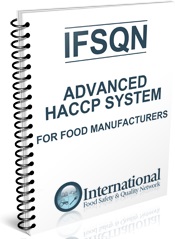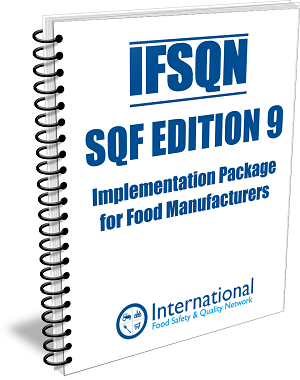- Home
- Sponsors
- Forums
- Members ˅
- Resources ˅
- Files
- FAQ ˅
- Jobs
-
Webinars ˅
- Upcoming Food Safety Fridays
- Upcoming Hot Topics from Sponsors
- Recorded Food Safety Fridays
- Recorded Food Safety Essentials
- Recorded Hot Topics from Sponsors
- Food Safety Live 2013
- Food Safety Live 2014
- Food Safety Live 2015
- Food Safety Live 2016
- Food Safety Live 2017
- Food Safety Live 2018
- Food Safety Live 2019
- Food Safety Live 2020
- Food Safety Live 2021
- Training ˅
- Links
- Store ˅
- More
Advertisement
Featured Implementation Packages
-
Advanced HACCP System for Food Manufacturers
Our HACCP package completely simplifies the process of implementing a HACCP syst... more
-
SQF Implementation Package for Food Manufacturers - Edition 9 (2022 Update)
This comprehensive documentation package is available for immediate download and... more
How Food Safety Agencies Protect Consumers with Food Labels
Jul 22 2015 07:30 PM | Simon

One example is the United States where food producers sometimes can’t be quite sure whether their food product is subject to federal regulations, state laws, both, or if they are exempt altogether from labeling their product. They often complain about the complexity and ambiguity of certain regulations, for example, the lack of specific details about what constitutes a “natural” product.
Though there are many complaints about the U.S. FDA’s food labeling requirements, food manufacturers have no choice but to comply, because similarly to other countries in the world, non-compliance results in product withdrawals and other penalties. In general, this is good news to consumers because rigorous food labeling standards protect their interests, even if the organization of these regulations and standards do have certain flaws.
The Basics of Packaged Food Product Labeling in the US
In the United States there are two main food safety agencies on a federal level: the U.S. Food and Drug Administration and U.S. Department of Agriculture. Apart from the FDA and USDA, there are other health departments and state regulatory bodies that control how a product is labeled. If a product is produced and sold only within one state, the manufacturer does not need to comply with FDA regulations. If producing and selling homemade food, small businesses needs to comply with their state’s cottage food laws.
For a food manufacturer who makes or sells packaged food products on the interstate market and has no experience with food packaging labels, the process can seem very frustrating. Thousands of pages on proper food labeling on the FDA website can be very discouraging for a business owner. The solution is often in hiring a food labeling expert or a nutrition labeling agency, but the service does not come free. And before paying good money for this type of service, food business owners should at least be familiar with the mandatory information that is required on a food label.
According to the FDA, this information includes:
- Statement of identity or common name of the food product.
- Net weight in grams (and optionally in ounces).
- Name and address of the manufacturer, packer or distributor.
- Ingredients list, with ingredients listed according to weight, from the heaviest. The list also needs to include allergens, if they are present.
- Nutrition facts label that includes information about the serving size, nutrients, vitamins and minerals.
Besides these mandatory food label elements, the FDA urges food producers to include any additional information that could help consumers make safe and smart choices about the food they are buying, such as health claims (if truthful), “best before” date, handling instructions, storage instructions, etc. However, it seems that not all FDA actions are directed towards protecting the consumers. Though the FDA received a formal legal petition to start requiring genetically engineered food labeling, the agency still hasn’t taken any steps in this direction. Similarly, there’s been a motion to make changes to nutrition facts label to better reflect the consumer's true eating habits (including realistic serving sizes), but the proposed changes are still only written and speculated about.
But regardless of the pressures of big food companies on the FDA and the occasional negative consequences of those pressures, food safety agencies are doing their best to make food producers transparent about their product and instill a sense of security in the consumers that food products on the market are safe for consumption.
Author Bio:
This article is contributed by food labeling experts from FoodPackagingLabels.net that specializes in high-quality food packaging labels design and printing. The team also spends time crafting helpful resources for small food business owners and consumers. The following e-book is the simplified and condensed version of the basics of the FDA food labeling regulations. It can be downloaded here for free.









0 Comments